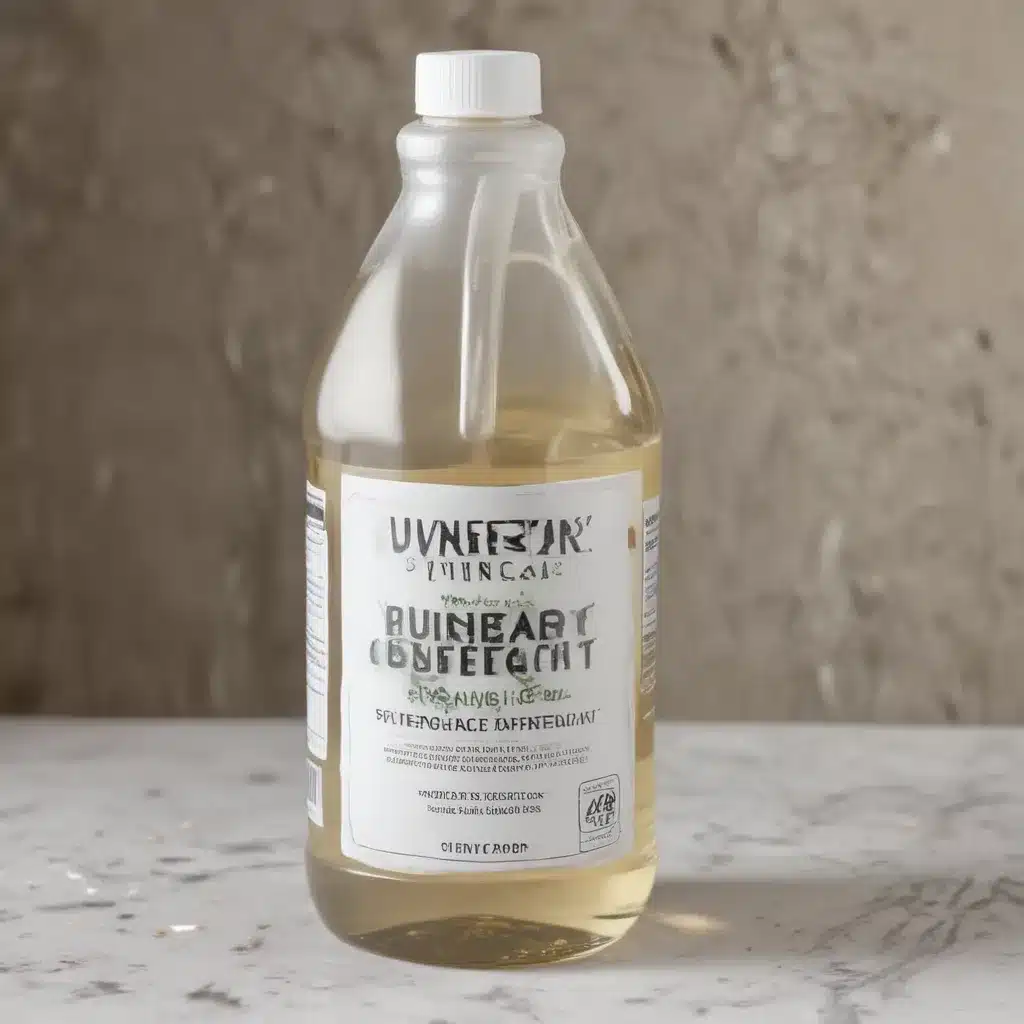The Humble Household Hero
I’ll admit, when I first heard that vinegar could be an effective disinfectant, I was a bit skeptical. I mean, come on – how could something as simple and commonplace as vinegar possibly compete with all the high-tech, heavy-duty cleaning products out there? But as it turns out, the joke’s on me, because vinegar is an absolute powerhouse when it comes to killing off even the toughest bacteria.
Mycobacteria: The Hardest to Kill
Mycobacteria are a particularly resilient bunch – they’re often referred to as the “cockroaches of the bacterial world.” These little buggers are the ones responsible for diseases like tuberculosis and leprosy, and they’re notoriously difficult to get rid of. In fact, they’re considered the most disinfectant-resistant bacteria out there.
So, when researchers at the National Institutes of Health decided to put vinegar to the test against these tough-as-nails microbes, I was skeptical, to say the least. But the results were nothing short of jaw-dropping.
Vinegar’s Surprising Superpowers
It turns out that acetic acid – the active ingredient in vinegar – is an absolute beast when it comes to killing off mycobacteria. In their experiments, the researchers found that exposing Mycobacterium tuberculosis (the bacteria that causes tuberculosis) to a 6% acetic acid solution for just 30 minutes resulted in at least an 8-log reduction in viable bacteria. That’s like taking a population of a billion TB bacteria and reducing it down to just a single survivor.
But the real shocker came when they tested vinegar against the Mycobacterium abscessus complex – a group of particularly nasty nontuberculous mycobacteria that have been causing all sorts of problems in healthcare settings. Even these super-resistant bugs couldn’t stand up to a 10% acetic acid solution, with the researchers observing a minimum 6-log reduction in viable cells.
And get this – the mycobactericidal power of vinegar held true even in the presence of organic material, like blood and protein, that you’d expect to interfere with its disinfecting abilities. So not only is vinegar a total boss at killing off the toughest bacteria, but it can do it even in “dirty” conditions.
A Versatile, Affordable Disinfectant
What makes vinegar’s superpowers even more impressive is that it’s a readily available, relatively inexpensive disinfectant option. As the researchers noted, a mere $100 worth of 99% acetic acid could effectively disinfect up to 20 liters of Mycobacterium tuberculosis cultures or sputum samples. And you can find basic white vinegar, which is typically around 5% acetic acid, right on the shelves of your local grocery store.
Compared to some of the more complex and costly disinfectants out there, vinegar is a breath of fresh air. And let’s not forget that it’s also a lot gentler on the environment and your health than a lot of those harsh chemical cleaners.
A Blast from the Past
It’s actually kind of funny that vinegar’s disinfectant prowess is only now starting to get the attention it deserves. Turns out, people have been using it for this purpose for centuries – the researchers point out that there are historical accounts of vinegar being used to treat infected wounds and even scrofula (a form of tuberculosis) way back in the Middle Ages.
And let’s not forget that vinegar has long been a go-to for cleaning and sanitizing all sorts of household surfaces and items. Home Depot even sells a 30% vinegar concentrate that’s marketed as an all-purpose cleaner and disinfectant. So in a way, we’re just rediscovering something that’s been under our noses (and in our kitchens) the whole time.
The Future of Vinegar-Based Disinfection
Now, I know what you’re thinking – if vinegar is so darn good at killing off these super-tough mycobacteria, why isn’t it the go-to disinfectant in hospitals and labs? Well, the researchers point out that while vinegar is highly effective, it does have a slightly longer exposure time requirement than some other disinfectants (around 30 minutes for optimal results).
But that doesn’t mean vinegar can’t have a place in the disinfection arsenal, especially in lower-resource settings where more expensive and complex options might not be readily available. And who knows – maybe with a little more research and innovation, we could find ways to make vinegar-based disinfection even more efficient and practical.
In the meantime, I’m definitely going to be keeping a closer eye on my trusty bottle of white vinegar here at the Adam Cleaning offices. After all, if it can take down the toughest bacteria around, just imagine what it can do for everyday dirt and grime. I’d say that makes vinegar a pretty darn powerful cleaning sidekick.







